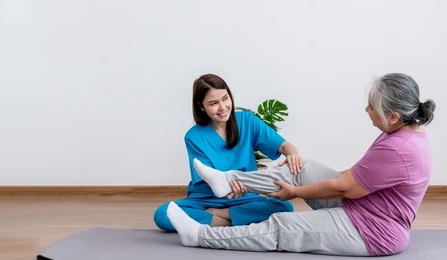Autism Spectrum Disorder (ASD) is a complex neurodevelopmental condition that affects communication, behavior, and social interaction. While traditional therapies such as behavioral therapy, speech therapy, and medications help manage symptoms, no cure currently exists. However, recent advancements in regenerative medicine have sparked interest in stem cell therapy as a potential treatment for autism. Researchers in Kuala Lumpur (KL), Malaysia, investigate how stem cells may help repair neurological pathways, reduce inflammation, and improve cognitive function in children and adults with ASD. But how does stem cell therapy work? What does the research say? And is this treatment available in Malaysia? Let’s explore the potential role of stem cells in autism therapy, ongoing clinical research, and what parents should know before considering this approach. Autism is a lifelong condition that affects individuals differently. Some people may have mild symptoms, while others experience significant challenges in daily life. ✔️ Difficulty with communication – Delayed speech, repetitive language, or nonverbal behavior. While traditional therapies can improve these symptoms, they do not target the biological causes of autism. This is where stem cell therapy is being explored as a novel approach.
Recent research suggests that autism may be linked to brain inflammation, immune system dysfunction, and poor neural connectivity. Stem cell therapy addresses these underlying factors rather than just managing symptoms. ✅ Reduces neuroinflammation – Helps calm the overactive immune response in the brain, which may contribute to autism symptoms. Although stem cell therapy is not a cure, early research indicates potential improvements in communication, behavior, and social skills for some children. ✔️ Derived from bone marrow, adipose (fat) tissue, or umbilical cord. ✔️ Found in the brain and spinal cord. ✔️ Sourced from umbilical cord blood and tissue. In Malaysia, research into umbilical cord-derived MSCs for autism treatment is ongoing, with some clinics offering regenerative therapy under strict guidelines Clinical studies worldwide are investigating the safety and effectiveness of stem cell therapy for ASD. Some promising findings include: 🔹 A 2020 study in the U.S. showed that children treated with umbilical cord blood stem cells experienced improvements in communication, social behavior, and focus. However, scientific consensus is still developing, and more long-term studies are needed to confirm the effectiveness and safety of stem cell therapy for autism.
Stem cell therapy is regulated by the Ministry of Health Malaysia (MOH) to ensure: ✔️ Ethical sourcing & proper processing of stem cells. When choosing a stem cell clinic in KL, ensure it follows MOH guidelines and evidence-based practices. Stem cell therapy may be an option for children or adults who: ✔️ Have moderate to severe autism symptoms that affect daily life. A consultation with a stem cell specialist in Kuala Lumpur is required to determine the suitability of the treatment.
🔹 Detailed neurological and behavioral evaluation. 🔹 Autologous stem cells (from the patient’s own bone marrow or fat) OR 🔹 Intravenous (IV) infusion – Distributes stem cells through the bloodstream. 🔹 Behavioral assessments over the following months. Results may vary, and multiple sessions may require noticeable improvements.
📍 Find a Certified Stem Cell Clinic in Kuala Lumpur Explore the future of autism treatment with regenerative medicine! 🌿✨ My experience with Stem Cell Therapy for Autism was fantastic. The treatment was super fast and it gave me a new life. This treatment was almost pain-free and provided quick results. I would highly recommend it. Nexus Clinic is the best clinic in the region to satisfy its patients with positive health results. My experience with Nexus Clinic was excellent. The staff and my doctors were all professional and well-trained. The stem cells for energy were minimally invasive and gave me immediate results. I highly recommend stem cells for energy to recover overall health and stay motivated with life. I highly recommend stem cells for energy to everyone seeking a fast and safe way to boost energy levels. It is a safe and minimally invasive procedure. I went through the stem cells for energy treatment, which helped me boost my energy and mood. I received the best treatment and care at Nexus Clinic, one of the best faculties in Malaysia. Stem Cell Therapy for Autism Treatment in KL, Malaysia
Are you struggling with joint pain, stiffness, and reduced mobility?
Understanding Autism Spectrum Disorder (ASD)
Common Symptoms of Autism
✔️ Social challenges – Avoiding eye contact, difficulty understanding emotions, or struggling with relationships.
✔️ Repetitive behaviors – Hand-flapping, rocking, strict routines, or fixations on specific topics.
✔️ Sensory sensitivities – Overreacting or underreacting to sounds, lights, textures, or smells.
How Stem Cell Therapy May Help in Autism Treatment?
Potential Benefits of Stem Cell Therapy for Autism
✅ Enhances brain connectivity – Stem cells may support the development of new neural pathways for improved cognitive function.
✅ Regulates immune system activity – Helps balance immune responses that may affect brain function.
✅ Stimulates neurogenesis – May promote the growth of new neurons and repair damaged cells.
✅ Improves oxygen supply to the brain – Some studies suggest that better blood flow could enhance brain activity.
Types of Stem Cells Being Investigated for Autism
1. Mesenchymal Stem Cells (MSCs)
✔️ Known for their anti-inflammatory and neuroprotective effects.
✔️ Most commonly used in clinical trials for autism.2. Neural Stem Cells (NSCs) (Experimental)
✔️ Can potentially help repair damaged neural pathways.
✔️ Still in early research stages and not widely available.3. Umbilical Cord Stem Cells (UCSCs)
✔️ Rich in growth factors that support brain development.
✔️ Being studied for their immune-modulating properties in autism treatment. What Does the Research Say About Stem Cell Therapy for Autism?
🔹 A 2017 study in India found that stem cell therapy improved sensory processing, cognition, and speech abilities in some autistic children.
🔹 A 2019 trial in Panama reported that children with autism had reduced inflammation markers after receiving MSC therapy.
Is Stem Cell Therapy for Autism Safe in Malaysia?
✔️ MOH-approved clinics with qualified specialists.
✔️ Strict safety protocols for pediatric patients.
Why More Families in Kuala Lumpur Are Exploring Stem Cell Therapy for Autism?
✔️ Have tried traditional therapies with limited success.
✔️ Are medically evaluated and deemed eligible for treatment by a specialist.
✔️ Have realistic expectations about potential benefits and limitations.
The Stem Cell Therapy Process for Autism in Malaysia
Step 1: Initial Consultation & Assessment
🔹 Discussion of treatment goals and expected outcomes.Step 2: Stem Cell Sourcing & Processing
🔹 Umbilical cord-derived MSCs (ethically sourced and processed in a MOH-approved lab).Step 3: Stem Cell Administration
🔹 Intranasal or Spinal Injection (Experimental) – Directly targets the central nervous system.Step 4: Monitoring & Follow-Up
🔹 Additional therapy support to maximize benefits.
Take the Next Step – Learn More About Stem Cell Therapy for Autism in KL
📞 Call us at +60 16-824 5699
💬 WhatsApp us for a FREE consultation here
Our Client’s Reviews
Roha Liama
Kiran Cheng
Taha Li
Si Tan
Kiara Shah
Waqas Sheikh
Zaviyar Yusuf
FAQs – Frequently Asked Questions
Locate Us At
Nexus Clinic Kuala Lumpur
Nexus Clinic Kuala Lumpur
LG 10, Lower Ground Floor, Wisma UOA II, Jalan Pinang, 50450 Kuala Lumpur, Malaysia.
Mobile: 016-7025699 / 03-21635699
Main Line: +016-9215699
Can Stem Cells Offer Hope for Autism? Exploring New Possibilities in Malaysia

